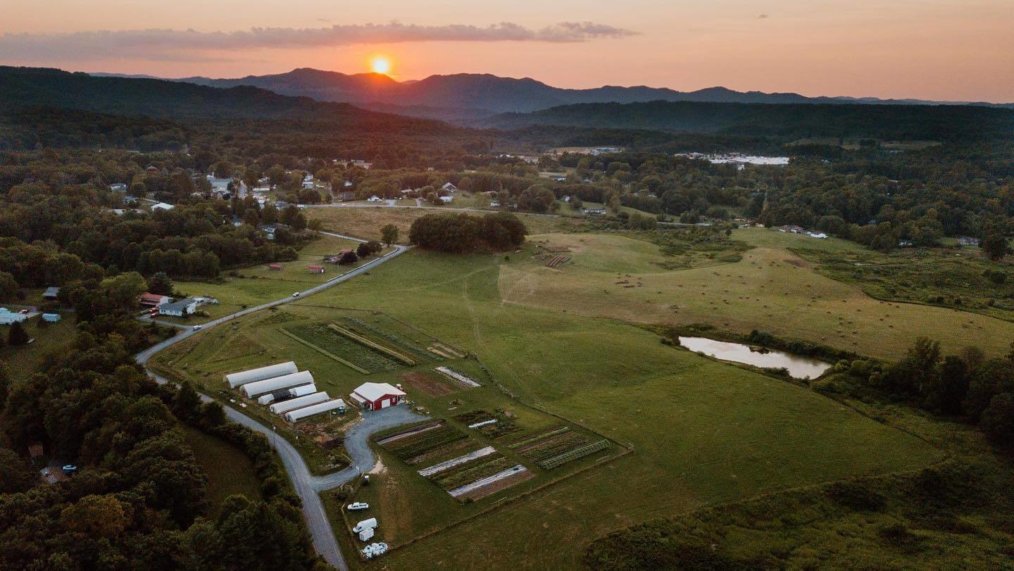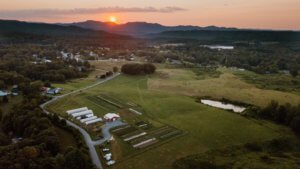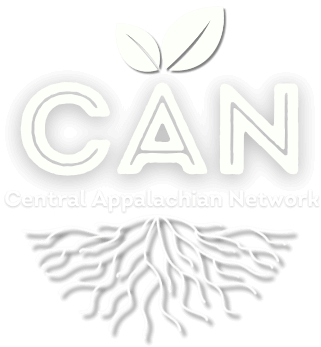
New Roots Community Farm: An Agricultural Conservation Easement Success Story
Accessing working land is one of the biggest challenges for a beginning farmer. New Roots Community Farm is working to tackle this barrier through its work with the West Virginia Agrarian Commons and the Agrarian Land Trust by showcasing equitable land tenure models s.
New Roots Community Farm https://www.newrootscommunityfarm.com/whoweare is a diversified, women-led farm that has grown with community support. New Roots serves as a local food aggregation and distribution site, runs a demonstration farm for intensive vegetable production, engages with the community, and provides various training and educational opportunities.
The nonprofit organization leases its 82 acres from the WV Agrarian Commons. When the land was purchased by the WV Agrarian Commons from the Fayette County Farmland Protection Board, an agricultural easement was placed on the farm. WV Agrarian Commons was able to purchase the land below market value due to its restriction only for farmland use. This is a cost-effective method of accessing farmland for beginning farmers and nonprofit organizations.
What is an Agricultural Conservation Easement?
Conservation easements are an effective tool for individuals and governments in protecting farmland from development and providing financial benefits to farmers.
An agricultural conservation easement is a written agreement between a landowner and a qualified nonprofit conservation organization (land trust) or public agency to protect the land available for agriculture or forestry. The conservation organization or public agency is responsible for monitoring the easement to ensure the terms of the easement are met.
These are sometimes called a “Buy-Protect-Sell” strategy for beginning farmers. A nonprofit or government buys a farm, then protects the farmland with an agricultural conservation easement, and then sells the farm to a local farmer at a reduced price.
The American Farm Trust explains it best: The agricultural conservation easement removes development rights from the land while limiting nonagricultural development and other uses that threaten the future of farming. The removal of development rights ensures the land can remain in active agricultural use, reducing the overall price of the property and making the farm more affordable. In addition, the easement will help ensure that the legacy of stewarding the land with sound farming practices continues in the future. https://farmland.org/how-afts-buy-protect-sell-strategy-helps-a-new-generation-gain-access-to-farmland/
Landowners retain property ownership and may be eligible for federal and state tax benefits. They can still farm, hunt, and restrict public access to their property while using the land as collateral for a loan and leasing or selling the property. The catch is that the land must forever be used for agriculture or forestry.
To learn more about conservation easements in your state, contact your local land trust organization https://landtrustalliance.org/land-trusts or the Farm Land Protection office in your state https://farmlandinfo.org/browse-by-state/.
A Conservation Easement Success Story

New Roots Community Farm’s launch story is a bit tangled, like the roots of the products raised on their farm. Through waves of hope and disappointment, New Roots eventually reached their movement of fruition.
In 2016, the 82-acre Whitlock farm in Fayetteville, West Virginia, was purchased by the Fayette County Farm Land Protection Board, an unusual move for the board to make. It was put into a conservation easement and mandated for farmland. The plot was in danger of development and would have been forever lost and never part of our food system again if the state hadn’t stepped in.
In return, the farm is bound to continue its food access work, further develop producer and consumer education models regarding food system issues, and continue aggregation and distribution of local food products as members of Turnrow Appalachian Farm Collective. The agricultural producer cooperative collectively farms vegetables, flowers, fruit, meat, poultry, and mushrooms.
Leveraging conserved land for agricultural development is one of the last ways communities have to protect farmland and the beautiful acreage of our county sides. As development spirals to our rural neighbors, keeping working land from being gobbled up is at the heart of projects like New Roots.
“We hope that by protecting this land, we can expose our community to this beautiful place,” said Susanna Wheeler, Farm Director. “At New Roots, we will grow more farmers, grow supply chains, and empower local decision-making of our food system.”
New Roots has indeed grown to be more than a farm — it’s a convening place for the community. It’s a place to volunteer, connect with new friends, and build a healthier West Virginia, all thanks to the hard work of a determined few to see this project to completion.
Learn more about New Roots on their website – https://www.newrootscommunityfarm.com/
